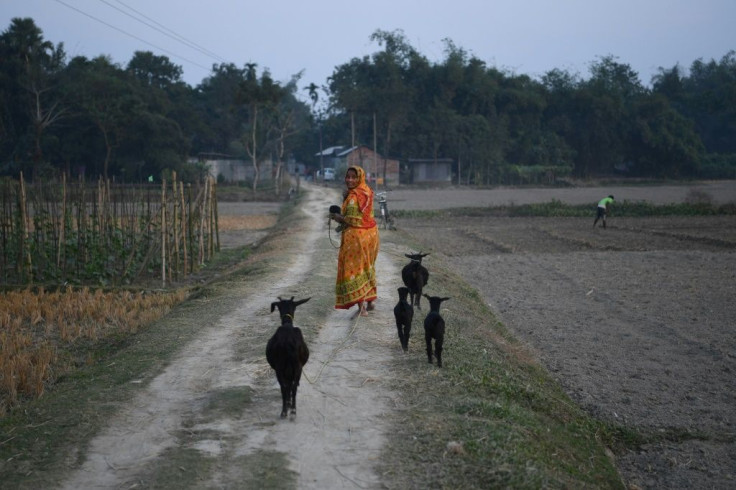India’s Assam State Reeling From Microfinance Crisis

KEY POINTS
- Bandhan Bank is reportedly the biggest microlender in Assam.
- Both borrowers and lenders skirt laws on caps and multiple lending
- Assam was ripe for microlending because of its large number of small farmers
Thousands of poor people in the northeastern Indian province of Assam have defaulted on small loans provided by microfinance companies thereby precipitating a crisis in the remote region.
Across Upper Assam, thousands have either fallen behind on loan payments on defaulted on them entirely.
The Microfinance Institutional Network, or MFIN, an association for the microfinance sector in India, warned that microloan borrowers in Assam have an indebtedness rate more than double the national average of 3%. In five Upper Assam districts -- Dibrugarh, Golaghat, Jorhat, Sivasagar and Tinsukia -- the rate of indebtedness stands at 11%, almost four times the national average.
“The trouble in Assam is a result of what we have predicted long before,” MFIN chairperson Manoj Nambiar said. “There [has] been [an] influx of new players in the microfinance sector, which are not necessarily guided by the same rules, leading to overlending. Now when the cash flow is getting tightened with falling annual household income on account of [a] rural slowdown, nonrepayment of loans has started happening.”
India media reported that microfinance debt has led to a wave of suicides, deaths and disappearances in Assam.
In Assam, as in many other parts of India, microloans require no collateral and typically are distributed to groups, usually women seeking to start up a small business. When one member defaults, all others become ineligible for further loans. Hence, the inability of one member to repay a loan installment places pressure on the others.
Microfinance initially gained a foothold in Assam due to its agricultural economy and high demand.
“The state is a fertile ground for microfinance companies because we have a history of small land holdings,” said Joydeep Baruah, an economist with the Omeo Kumar Das Institute of Social Change and Development of Guwahati, Assam. “So cash requirements are low and it makes no sense to borrow from conventional banks where such loans come with a high processing fee.”
Indeed, the Assam Human Development Report said that nearly 85% of the state’s farmers own less than a hectare [2.5 acres] of land.
Abhijit Sharma, a Guwahati-based economist and a pioneer of microfinance in the region, said Upper Assam is particularly badly hit because the “cash industries” of tea, oil and fertilizer that local people depend upon for jobs were in decline.
“So, people seem to supplementing their declining incomes with this new source of microfinance loans – which is not really an income at all,” he said.
Many laborers have taken new microloans to pay off existing loans.
While the Reserve Bank of India ruled that no more than two microfinance institutions can lend to one customer at one time, about 24% of microfinance borrowers with loans of more than $1,400 in Assam had received loans from more than three lenders. Some even took out loans from as many as six lenders.
Both customers and lenders have resorted to various forms of fraud to allow multiple loans to borrowers.
“There are too many players these days because they see a profit in the sector,” said Ronejit Bhattacharya, a bank manager in Assam.
Sharma, a strong proponent of microlending, admitted that “while it is true that people borrowed willingly and would often demand more loans, lenders should have been more careful.”
In fact, many lenders have ignored rules by shelling out multiple loans above mandated caps.
“While many lenders follow the indebtedness cap, some don’t,” said an MFIN spokesperson. “This leads to customers getting indebted beyond [$1,400].”
Some women in rural Upper Assam have called on the local government to ban microfinance institutions from the state.
“The kind of torture that we have had to face for defaulting is unspeakable – it is dehumanizing,” said Antara Dutta of the Jagrata Mahila Suraksha Samaj, a group of women fighting microloans.
Dutta said she knows of 19 to 20 people who committed suicide after being unable able to repay loans. “There is no concept of late payment of instalments in some [microlenders], so people have to give away jewelry. They are into a vicious cycle of debts,” she added.
Last November, Assam opposition leader Debabrata Saikia asked the governor of the state to draft a law to protect the poor from unethical microlenders, citing “the plight of numerous people in rural areas of Assam who are falling victims to a debt trap due to [the] cynical policy adopted by certain private banks and microfinance institutions.”
Assam finance minister Himanta Biswa Sarma said he was aware of the problem and that the local “government is examining the issue.”
Nambiar said his agency is “taking every possible step to restore normalcy.”
Investment Information and Credit Rating Agency of India Ltd., or ICRA, said it thinks microlending activities in Assam will decrease after years of rapid growth and, now, rising delinquencies.
Bandhan Bank, which is based in Kolkata, West Bengal, is reportedly the biggest microlender in Assam, with more than 15% of its total assets under management in the state.
Macquarie Research reported that Bandhan Bank is using a very aggressive strategy across northeastern India.
“We think Bandhan Bank is trying to replicate the ‘crowd-out-the-competition’ strategy in microfinance, especially in the eastern [part of India],” the group wrote. “It does so by being the world’s lowest cost microfinance lender, but more importantly, by giving significantly higher loans than the competition.”
© Copyright IBTimes 2025. All rights reserved.





















